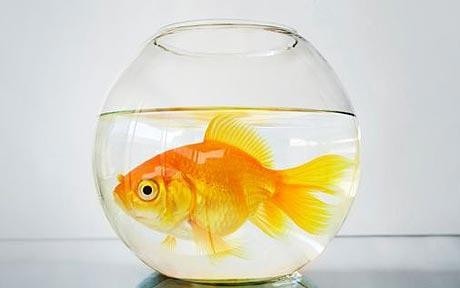Richard Harrod: Bad for the Goldfish

9 January – 15 February 2015
Opening Reception 9 January 6-10pm
Marginal Utility is proud to present ‘Bad for the Goldfish’ by the Philadelphia based artist Richard Harrod. This is Harrod’s third project to be exhibited with Marginal Utility.
Exhibition Essay Title: “Goldfish” by A. A. Milne. Author of “Winnie-The-Pooh”
[edited for length]
Let us talk about–well, anything you will. Goldfish, for instance.
Goldfish are a symbol of old-world tranquillity or mid-Victorian futility according to their position in the home. Outside the home, in that wild state from which civilization has dragged them, they may have stood for dare-devil courage or constancy or devotion; I cannot tell. I may only speak of them now as I find them, which is in the garden or in the drawing-room. In their lily-leaved pool, sunk deep in the old flagged terrace, upon whose borders the blackbird whistles his early-morning song, […]. But in their cheap glass bowl upon the three- legged table, above which the cloth-covered canary maintains a stolid silence, they remind me of antimacassars and horsehair sofas and all that is […]. It is hard that the goldfish himself should have so little choice in the matter. Goldfish look pretty in the terrace pond, yet I doubt if it was the need for prettiness which brought them there. Rather the need for some thing to throw things to. No one of the initiate can sit in front of Nature’s most wonderful effect, the sea, without wishing to throw stones into it, the physical pleasure of the effort and the aesthetic pleasure of the splash combining to produce perfect contentment.
I suppose (but I am lamentably ignorant on these as on all other matters) that there was a time when goldfish lived a wild free life of their own. They roamed the sea or the river, or whatever it was, […]. Let us consider now the case of the goldfish in the house [or on the job]. If his bowl is placed on a table in the middle of the floor, he has but to flash his tail once and he has been all round the drawing-room. The drawing-room may not seem much to you, but to him this impressionist picture through the curved glass must be amazing. Let not the outdoor goldfish boast of his freedom. What does he, in his little world of water-lily roots, know of the vista upon vista which opens to his more happy brother as he passes jauntily from china dog to ottoman and from ottoman to Henry’s father? Ah, here is life! It may be that in the course of years he will get used to it, even bored by it; indeed, for that reason I always advocate giving him a glance at the dining-room or the bedrooms on Wednesdays and Saturdays; but his first day in the bowl must be the opening of an undreamt of heaven to him.
Again, what an adventurous life is his. At any moment a cat may climb up and fetch him out, a child may upset him, grown-ups may neglect to feed him or to change his water. The temptation to take him up and massage him must be irresistible to outsiders. All these dangers the goldfish in the pond avoids; he lives a sheltered and unexciting life, and when he wants to die he dies unnoticed, unregretted, but for his brother the tears and the solemn funeral.
Yes; now that I have thought it out, I can see that I was wrong in calling the indoor goldfish a symbol of mid-Victorian futility. I recognize him now as the symbol of enterprise and endurance, of restlessness and Post-Impressionism. He is not mid-Victorian, he is contemporary.
Which is all I want to say about goldfish.
[The end]
A. A. Milne’s essay: Goldfish
Special Prize for the 53rd Visitor!